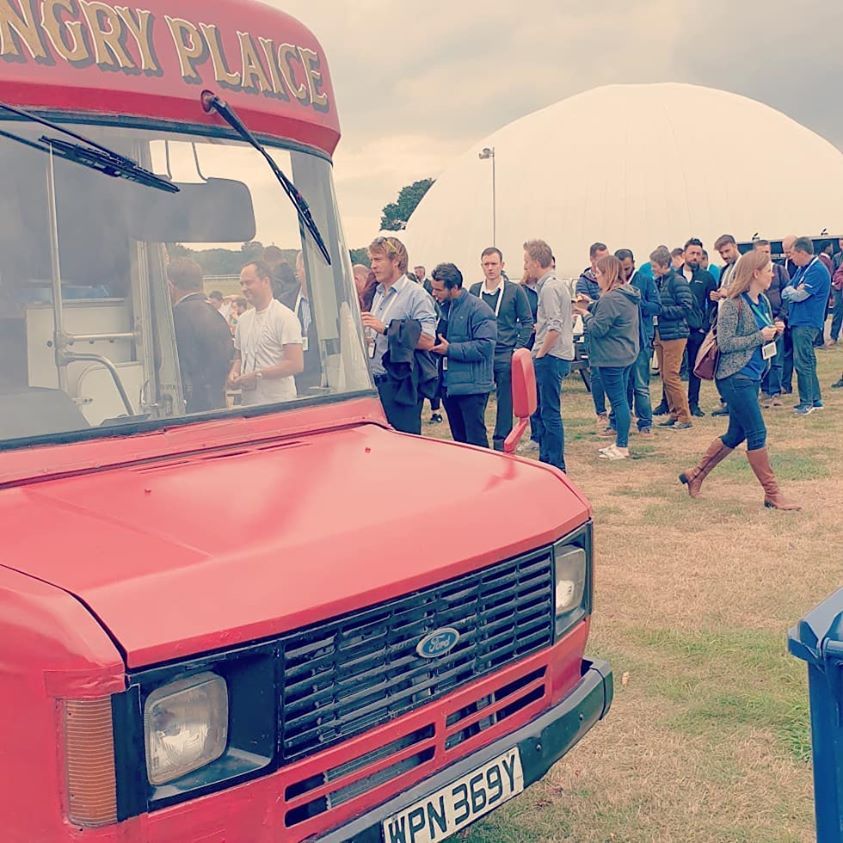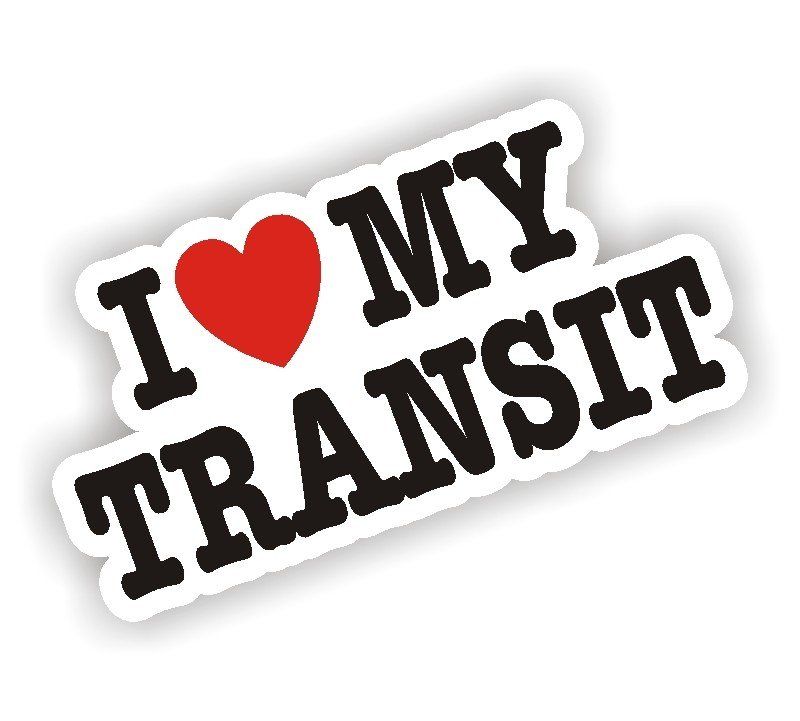This article delves into the significant impact of regular staff appreciation on fostering a positive work culture. By featuring interviews with companies that have successfully implemented appreciation initiatives, we aim to inspire other organisations to enhance productivity and boost employee morale through thoughtful recognition.
The Transformative Power of Staff Appreciation in the Workplace
The Transformative Power of Staff Appreciation in the Workplace
Introduction - The Importance of Staff Appreciation in Today's Workplace
In today's fast-paced and competitive work environment, the significance of staff appreciation cannot be overstated. Organisations that prioritise recognising and valuing their employees foster a culture of engagement, loyalty, and productivity. When individuals feel appreciated for their contributions—no matter how big or small—they are more likely to go above and beyond in their roles, leading to increased morale and overall workplace satisfaction.
Research has shown that when employees receive recognition for their hard work, it not only boosts their self-esteem but also enhances teamwork dynamics. Appreciated staff members tend to collaborate more effectively with colleagues, creating a synergistic atmosphere where innovative ideas can flourish. Furthermore, employee retention rates significantly improve when organisations implement consistent appreciation practices; valued workers are less likely to seek opportunities elsewhere.
In addition to influencing individual performance levels, appreciating staff contributes positively to an organization’s brand reputation. Companies known for treating employees well garner respect from clients and customers alike, attracting top talent while influencing consumer preferences based on shared values.
This introduction sets the stage for exploring various strategies businesses can employ to cultivate an environment rooted in gratitude—ultimately nurturing a workforce that feels empowered and motivated every day they come into the office. As we delve deeper into this essential topic, we will highlight best practices alongside case studies illustrating successful implementation of staff appreciation initiatives across diverse industries.
Benefits of Employee Recognition
Employee recognition goes beyond a mere pat on the back; it fuels engagement, loyalty, and productivity while fostering a positive workplace culture. Studies have shown that organisations with effective employee recognition programs enjoy significant improvements in metrics such as job satisfaction, retention rates, and overall performance. Here are some key benefits:
**a. Enhanced Motivation:** Recognising employees for their hard work creates intrinsic motivation to excel further. When staff members see that their contributions are valued, they’re more likely to go above and beyond in their roles.
**b. Improved Retention Rates:** Companies that prioritise employee recognition often experience lower turnover rates since staff feel appreciated and connected to the organization’s mission. Employees who believe they are recognised for their efforts tend to form stronger emotional ties with their employer.
**c. Increased Productivity:** Acknowledged employees frequently exhibit higher levels of productivity due to enhanced morale and motivation stemming from appreciation initiatives—leading them to contribute more meaningfully towards organisational goals.
**d. Positive Workplace Culture:** Celebrating achievements fosters an encouraging atmosphere where colleagues support one another’s growth instead of competing solely against each other—a crucial shift toward collaboration over rivalry.
**e. Attraction of Top Talent:** An organisation celebrated for its strong emphasis on employee appreciation can effortlessly attract top talent looking not only for attractive salaries but also assurance about working within a healthy corporate environment.
Effective Strategies for Employee Recognition
Implementing an effective employee recognition program requires careful planning tailored to your organization's specific needs (and that means listening closely). Below are few strategies businesses might consider:
**a. Regular Feedback Mechanisms:** Implement systems like weekly check-ins or feedback sessions where managers actively discuss accomplishments with employees directly—this ensures acknowledgment isn’t reserved solely for annual reviews but becomes part of everyday interactions.
**b. Personalised Recognition Efforts:** Understand what forms resonate best with different team members since individual preferences vary widely—from public accolades during meetings or informal shout-outs via office communication tools—to handwritten notes expressing sincere gratitude—all approaches should align thoughtfully around personal tastes/preferences.
**c.Small Gestures Matter Too!: ** Sometimes those little things we do really count cheap beverages after long days/weeks could show meaningful care when implemented correctly making everyone feel included celebrating successes together.
Case Study: Company X's Approach To Staff Appreciation Initiatives
Company X is an example of how cultivating an environment approval leads highly engaged workers who drive success. To encourage expressively recognizing behavior grounded within core values focus established several programs reinforcing this commitment successfully uplifting spirits among
Employee recognition programs have numerous benefits that extend far beyond merely making people feel good about themselves:
- **Enhanced Productivity**: Employees who feel recognized tend to have higher levels of motivation which leads directly towards improved efficiency at work.
- **Improved Job Satisfaction**: Regularly acknowledging achievements fosters open communication between management and team members resulting often increases job joy over time.
- **Lower Turnover Rates**: Valued employees are typically happier within their positions—the probability they're going elsewhere decreases considerably thanks largely due effective recognitive measures put forth by employers looking after them personally as individuals rather than just another number on payroll sheets.
By investing thoughtfully into comprehensive approaches aimed at thanking teams regularly – whether through simple shout-outs during meetings or elaborate rewards systems tailored suited around motivations driving each group—the potential success stories cropping up throughout organizations becomes limitless moving forward rightly dedicated focused efforts along these lines.
Manifestations Of Effective Appreciation Practices
To truly harness powerful impact stemming from principles listed earlier onward fully realizing tangible results requires excelling execution oriented thoughtful processes laid down methodically grounded core values articulated consistently ensuring climb upwards sustainable expansion
Building a Culture of Appreciation
Creating a culture that prioritises appreciation involves more than just sporadic acknowledgments; it is about embedding gratitude into the very fabric of the organisation. This can be achieved by implementing structured practices that encourage genuine recognition among peers, as well as between management and staff.
A. Leadership Commitment
Leaders play a crucial role in establishing a culture of appreciation. They must model behaviors they wish to see throughout their teams, consistently recognising individual and team achievements both privately and publicly. Regularly sharing success stories during meetings or through internal communication channels serves to highlight contributions across various levels, reinforcing the significance of every role within the organisation.
B. Peer Recognition Programs
Encouraging peer-to-peer recognition not only fosters camaraderie but also empowers individuals to acknowledge one another's efforts directly. Implementing platforms where employees can share shout-outs or commendations on accomplishments builds mutual respect and encourages teamwork while diversifying sources of acknowledgment beyond traditional top-down approaches.
C. Celebrating Milestones
Recognising milestones—whether personal (such as work anniversaries) or collective (like project completions)—can create memorable moments for employees that affirm their hard work and dedication. Organizing celebrations around these events shows care for people’s journeys within the company, further deepening their connection with organisational goals.
Continuous Feedback Mechanisms
To keep appreciation flourishing, organisations should establish continuous feedback mechanisms that facilitate open dialogues regarding performance and recognition preferences. Regular check-ins allow leaders to uncover what forms of acknowledgment resonate most with employees—from public praise to personalised notes—and help refine how gratitude is expressed throughout different contexts in order to ensure inclusivity across diverse personalities and professional backgrounds.
Measuring Impact
Lastly, measuring the impact of appreciation initiatives should not be overlooked; gathering data on employee satisfaction surveys pre- and post-implementation will provide necessary insights into overall effectiveness while highlighting areas needing improvement! Honor systems need regular evaluation so adjustments may be made swiftly according shifting organizational dynamics alongside employee needs evolving over time aiding retention opportunities— demonstrating ongoing commitment toward nurturing high morale workplaces where everyone feels valued contributes sustainably towards overarching success.
In conclusion, cultivating an enduring practice focused on appreciating talents enables companies forge strong bonds amongst members leading ultimately unlocking unparalleled potential driven cohesively together imbued celebrating progress fostering increased motivation fueling long-term triumphs beyond conventional expectations realized collectively harmoniously.
Practical Ways to Implement Staff Appreciation Programs
A. **Recognition Celebrations**: Host regular celebrations or events that acknowledge individual and team achievements. Whether it’s a monthly awards ceremony, quarterly appreciation gatherings, or informal recognition lunches, these events can bring staff together in a positive environment and highlight the contributions of employees.
B. **Peer-to-Peer Recognition**: Create a system where colleagues can recognise one another for their hard work and accomplishments. This could be facilitated through an online platform where employees can give shout-outs, leave messages of appreciation, or submit nominations for various awards based on peer input.
C. **Personalized Thank You Notes**: Simple gestures often have the most significant impact. Encourage managers to write personalized thank you notes to team members highlighting specific contributions and efforts that were appreciated throughout the year.
D. **Wellness Days**: Offer wellness days as part of your employee benefits program to help alleviate burnout and show appreciation for hard work over time. Employees will value the opportunity to recharge while knowing their well-being is prioritized by management.
E. **Professional Development Opportunities**: Invest in employees’ growth with opportunities such as workshops, courses, or seminars relevant to their roles or aspirations within the company. Showing commitment toward their development not only recognises current capabilities but also fosters long-term loyalty.
F. **Feedback Loops**: Establish a structured process where employee feedback is collected regularly regarding workplace morale and satisfaction levels—this could take place through surveys or discussion forums—and ensure leaders address concerns raised during this process constructively.
G. **Team Building Activities**: Plan regular interactive sessions that enable teams to bond outside of ordinary tasks—be it retreats, out-of-office days involving fun games, volunteering experiences together—or simply fostering an inclusive culture wherein everyone participates regardless of role level.
H. **Celebrating Milestones**: Recognize personal milestones (birthdays, anniversaries) alongside professional ones; acknowledging life outside work emphasizes genuine care towards each team member while strengthening community spirit among staff members too.
Iliad Addressing Diversity & Inclusivity Initiatives: Celebrate diversity by incorporating programs targeted at promoting inclusivity within all levels; hold dialogues focused on culturally enriched backgrounds bringing forth enlightening discussions enhancing understanding amongst varying perspectives across groups leading ultimately cohesive organisational dynamics cultivated sustainably forward.
Implementing these strategies will require effort from leadership at every level—but with sustained dedication toward appreciating each individual's unique contribution—the organisation's culture flourishes beautifully while achieving unmatched success collectively harmonized.
Measuring the Impact of Appreciation on Performance
Measuring the impact of appreciation on performance involves a multi-faceted approach that encompasses both qualitative and quantitative metrics. By regularly evaluating employee engagement surveys, feedback tools, and performance reviews, organisations can gauge how recognition influences motivation and productivity.
One key method is to track changes in employee satisfaction scores before and after implementing appreciation initiatives. This data provides insight into the perceived value of recognition efforts among team members. Additionally, analysing turnover rates can reveal whether an increase in appreciation leads to improved retention—a critical factor for long-term success.
Furthermore, establishing clear Key Performance Indicators (KPIs) related to teamwork, innovation, and overall output can help quantify improvements linked to enhanced recognition practices. For instance, measuring project completion rates or customer satisfaction scores post-implementation of appreciation programs often yields positive trends that indicate increased morale directly correlating with higher performance levels.
Qualitative measures also play a pivotal role; conducting focus groups allows for deeper exploration into how employees feel valued within their roles. Collecting anecdotes about instances where recognition has inspired them reinforces the emotional connection between acknowledgment and productivity enhancement.
By integrating these comprehensive assessment methods—combining hard data with personal stories—organisations will not only celebrate achievements effectively but create a robust system that fosters ongoing improvement. Ultimately, this strategic emphasis on appreciating individual contributions cultivates a thriving environment where every employee feels empowered to contribute their best work toward shared organizational goals.
Overcoming Challenges in Sustaining Staff Appreciation
Sustaining staff appreciation can present various challenges, especially in dynamic work environments where priorities shift and time constraints often take precedence. However, recognising and addressing these obstacles is essential for maintaining a culture of appreciation.
One significant challenge is the tendency for recognition efforts to become routine or superficial. When appreciation rituals lack authenticity or variety, employees may feel less valued over time. To combat this, organisations should regularly refresh their acknowledgment strategies by soliciting employee feedback on what forms of recognition resonate most with them—whether through personalised notes, public celebrations, or peer-to-peer shout-outs.
Another hurdle lies in ensuring that appreciation practices are inclusive and reach all employees equitably. In diverse workplaces, different individuals may respond to various forms of acknowledgment; some may prefer private praise while others thrive on public validation. Organisations must commit to understanding the unique preferences within their teams and striving for equity in recognition.
Additionally, leadership buy-in is crucial yet sometimes lacking. If management doesn't consistently model appreciative behaviors or prioritise recognition initiatives as part of the organizational culture, it can undermine efforts at every level. Therefore, engaging leaders through training programs focused on emotional intelligence and the benefits of staff appreciation can foster a top-down approach that reinforces its significance throughout the organisation.
Furthermore, measuring the impact of appreciation efforts presents an ongoing challenge. Without concrete metrics to evaluate how well these initiatives are enhancing morale and productivity—such as employee satisfaction surveys or retention rates—it becomes difficult to justify continued investment in such programs. Establishing benchmarks before implementing new initiatives will help track progress effectively after launch.
Finally—the digital divide plays a role as remote work gains traction across industries; companies could struggle with fostering genuine connections among geographically dispersed teams if they aren't intentional about virtual engagement platforms tailored specifically towards providing meaningful moments of gratitude online.
To overcome these challenges collectively involves commitment from both leadership and team members alike: creating an environment where expressing gratitude isn't merely seen as another task—but rather embedded deeply within everyday interactions fosters connection while reinforcing everyone’s stake within shared success narratives!
Future Trends in Employee Recognition
As organisations continue to evolve in the wake of technological advancements and changing workplace dynamics, several key trends are expected to shape the future of employee recognition.
**1. Personalisation:**
Employee recognition programs will increasingly aim for personalized experiences that cater not just to job roles but also individual preferences and values. This means tailoring recognition initiatives to align with what employees genuinely appreciate—some may prefer public acknowledgment, while others might value private notes or unique rewards.
**2. Peer-to-Peer Recognition:**
There is a growing emphasis on peer-to-peer recognition systems where employees can recognize each other’s contributions on platforms that facilitate instant feedback. This collective appreciation fosters a collaborative culture and builds stronger team connections across all levels within the organization.
**3. Integration with Performance Management Systems:**
Recognition efforts will be seamlessly integrated into performance management tools, allowing employers to track achievements alongside routine evaluations comprehensively. By tying accomplishments directly with organisational goals, companies can ensure alignment between individual contributions and broader objectives.
**4. Use of Technology and Gamification:**
The integration of gamified elements into employee recognition systems is becoming more popular, engaging employees through friendly competition or achievement badges while ensuring their accomplishments feel rewarding at every turn. Technological innovations such as AI-driven analytics will help tailor these experiences further by offering insights based on engagement patterns.
**5. Continuous Feedback Loops:**
Traditional annual reviews are giving way to continuous feedback models which include regular check-ins highlighting achievements instantly rather than waiting for formal assessments—a move that aligns well with modern work dynamics focused on agility and adaptability.
**6. Focus on Mental Health Awareness:**
More organisations are recognizing mental health as paramount for overall productivity; thus acknowledgment of efforts related specifically towards fostering well-being (e.g., supporting teammates during stressful periods) ensures comprehensive regard beyond mere task completion implies deeper emotional bonds amongst colleagues enriching workplace morale significantly.
By staying attuned to these trends and being proactive in implementing them thoughtfully across diverse teams enables businesses not only safeguard talent retention but also nurture environments brimming with positivity fueling collaboration towards shared aspirations.
Conclusion
In conclusion, fostering a culture of well-being within the workplace transcends traditional notions of productivity. By recognising and valuing the emotional contributions of employees, organisations can create a more supportive environment that enhances job satisfaction and collective performance. The shift from a purely output-driven mindset to one that embraces holistic employee wellness is not merely beneficial; it is essential in today’s dynamic business landscape.
Implementing strategies that promote mental health, support work-life balance, and encourage open communication not only strengthens interpersonal relationships among colleagues but also positions businesses to thrive amid challenges. This proactive approach cultivates resilience and adaptability within teams, ultimately leading to greater innovation and success.
As organisations continue to navigate complexities such as remote work dynamics and market fluctuations, prioritizing employee well-being will emerge as a critical differentiator. Those who recognize this shift toward comprehensive care will be better equipped to attract top talent and maintain high levels of engagement—fostering an atmosphere where everyone can contribute their best selves toward achieving shared goals.
Therefore, acknowledging the impact of emotional bonds in collaboration amplifies both individual fulfillment and organisational effectiveness—a symbiotic relationship vital for sustainable growth in any enterprise looking forward towards future horizons.
The Hungry Plaice
Vintage Fish & Chip Van And Ice Cream Van Hire
Contact Us For A Quote
Sign up to our newsletter
















